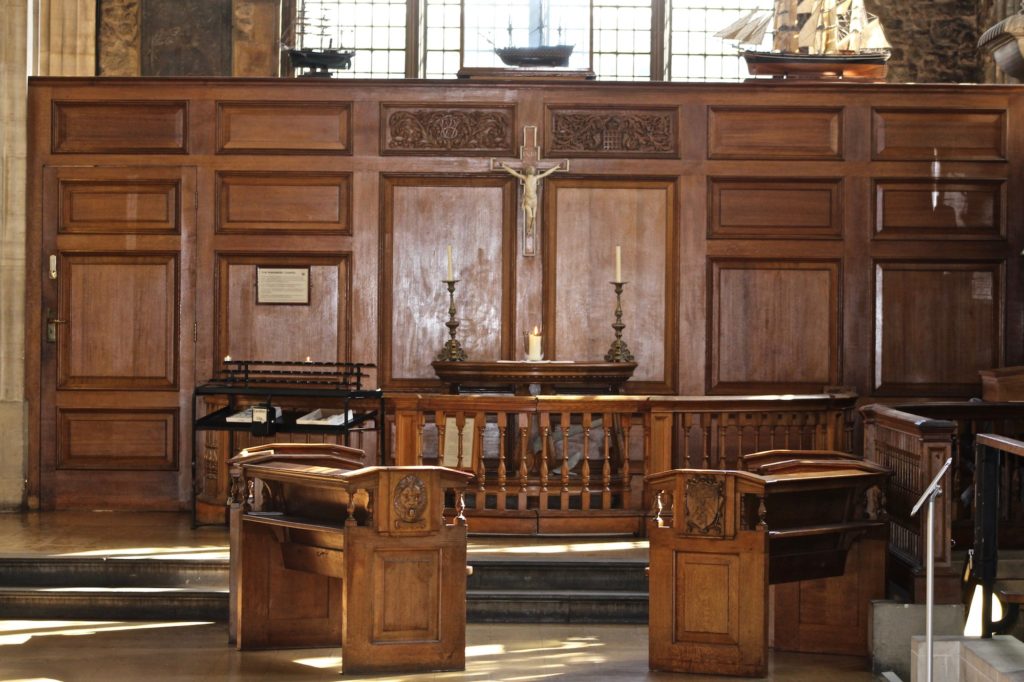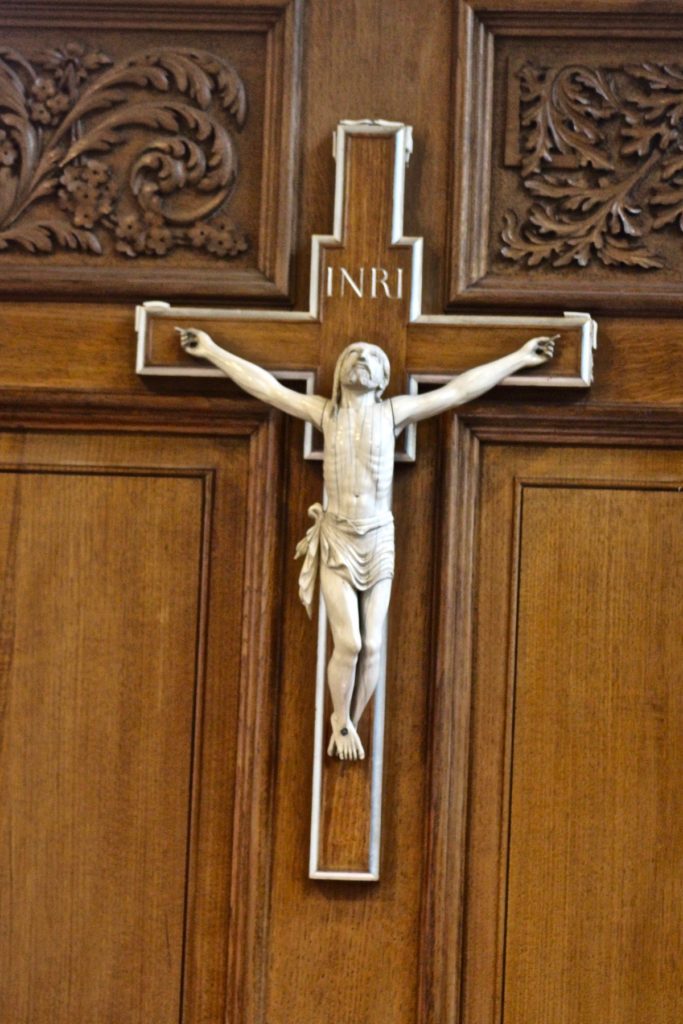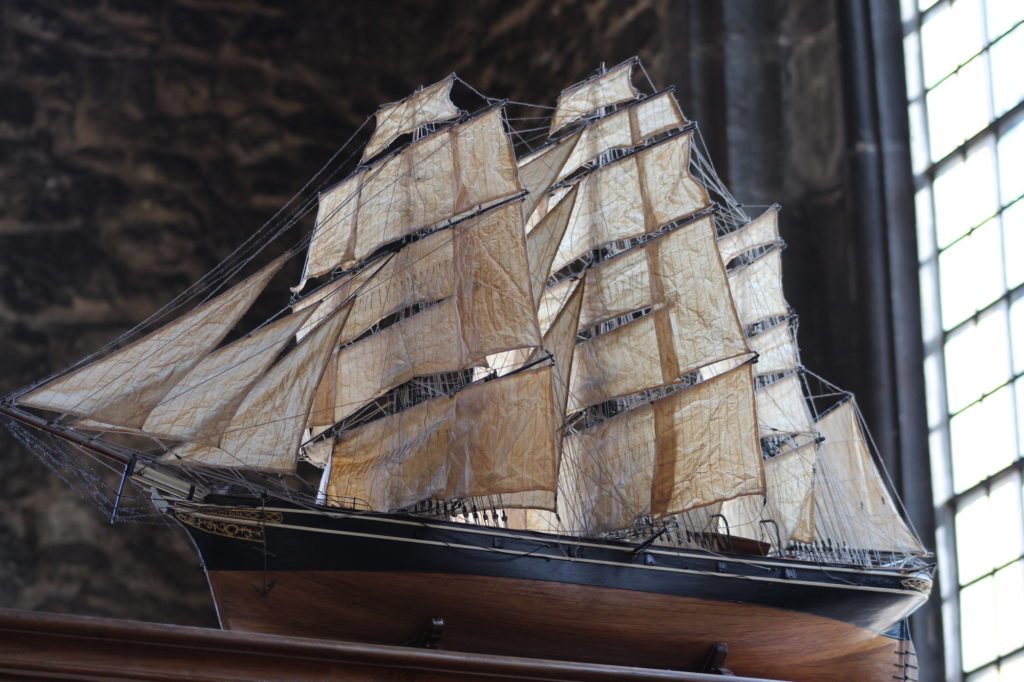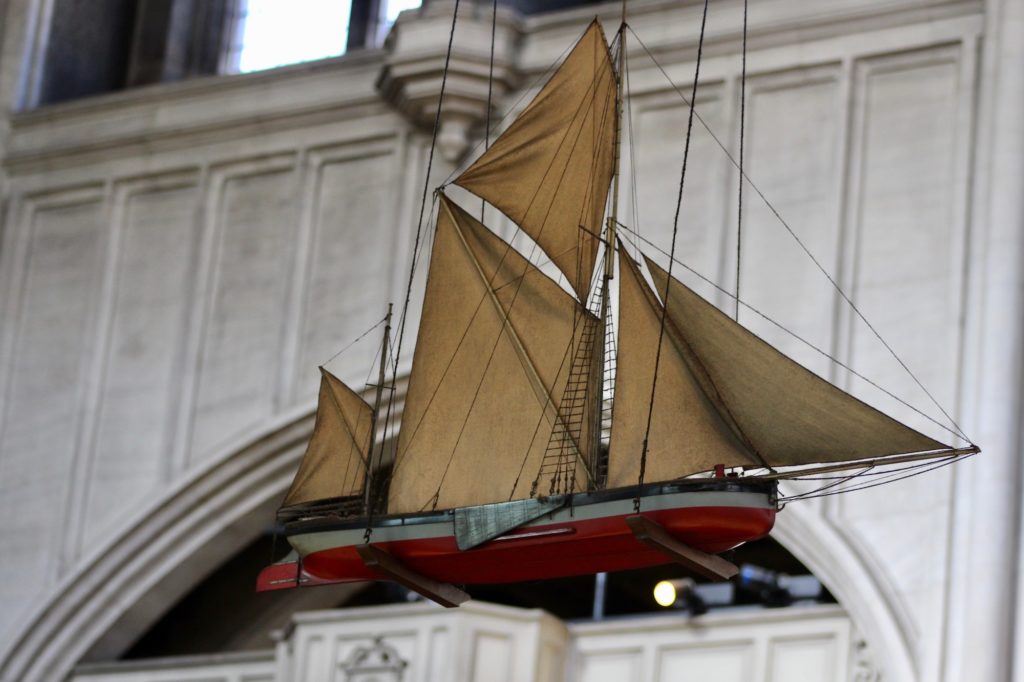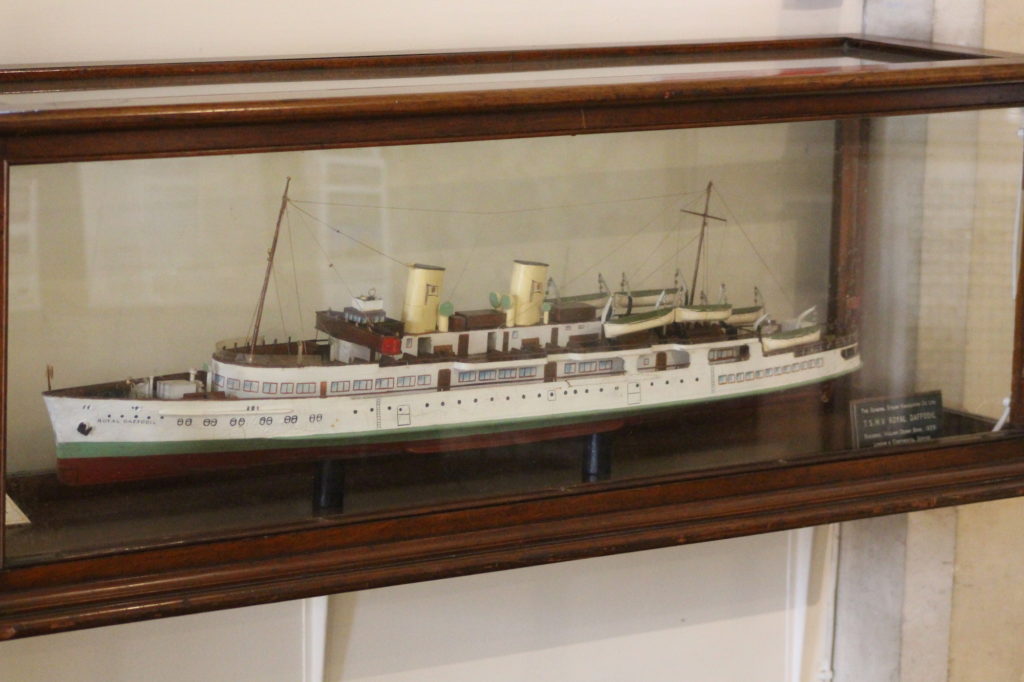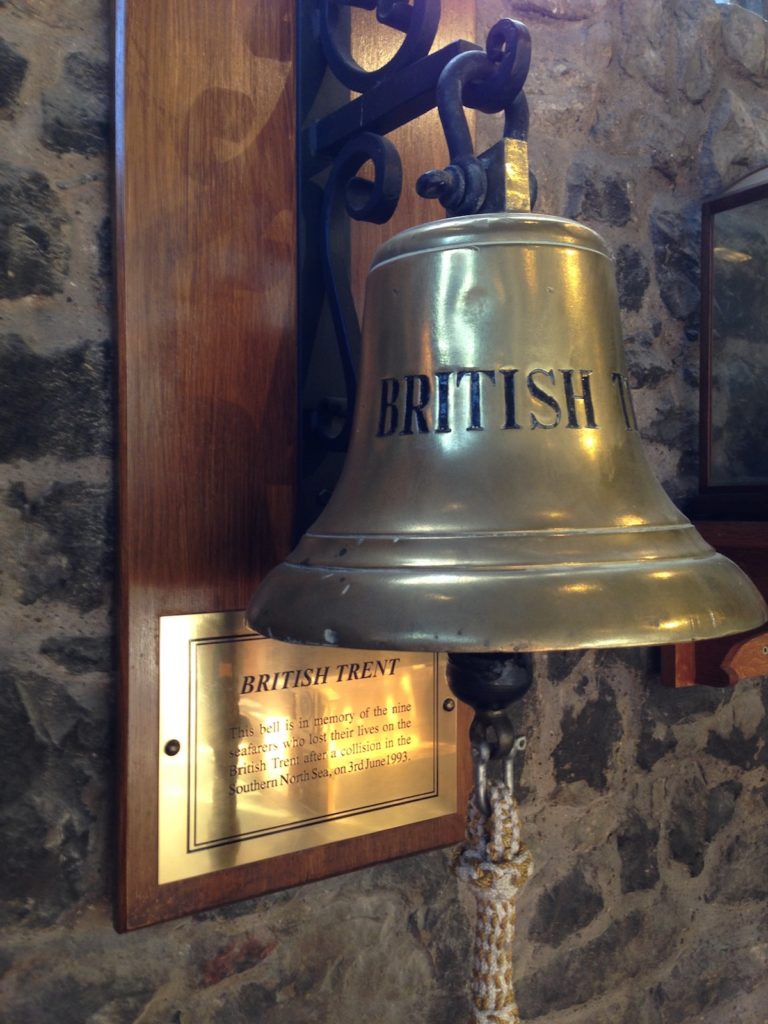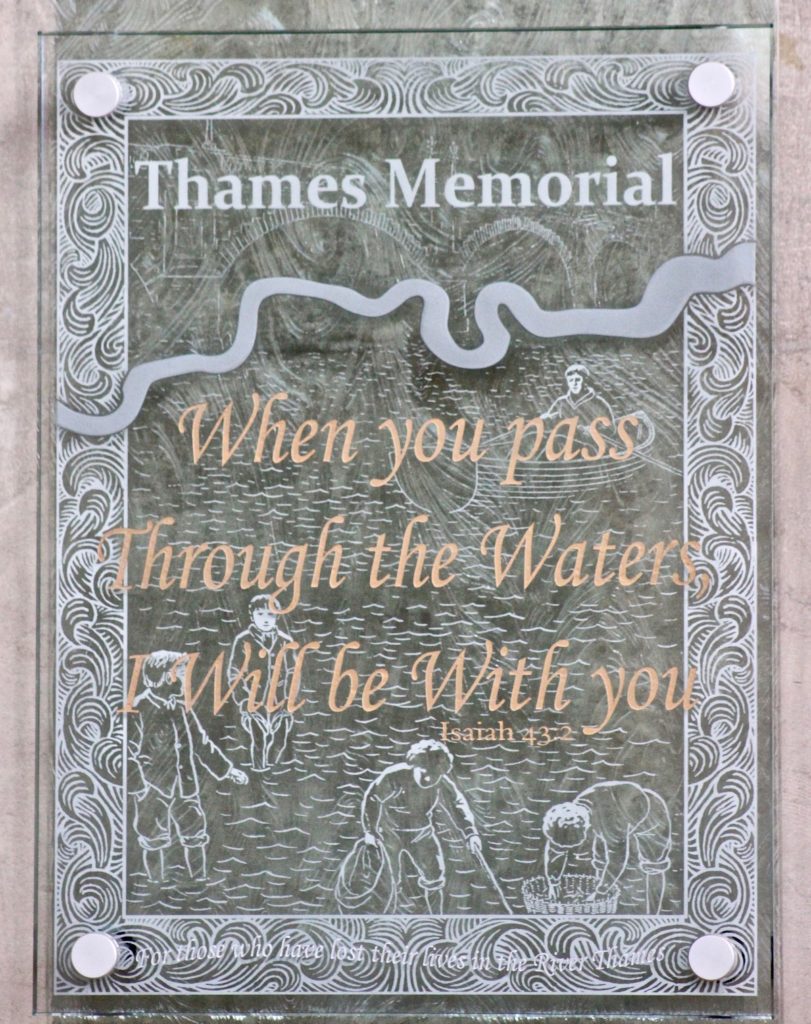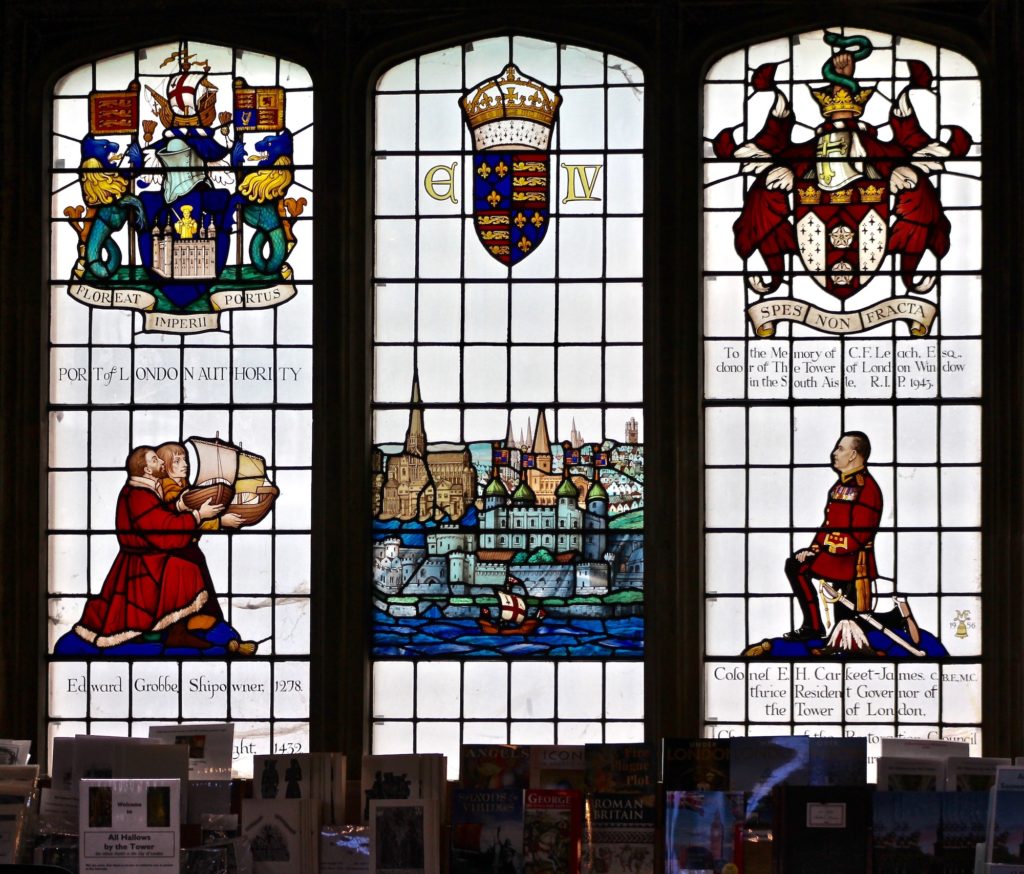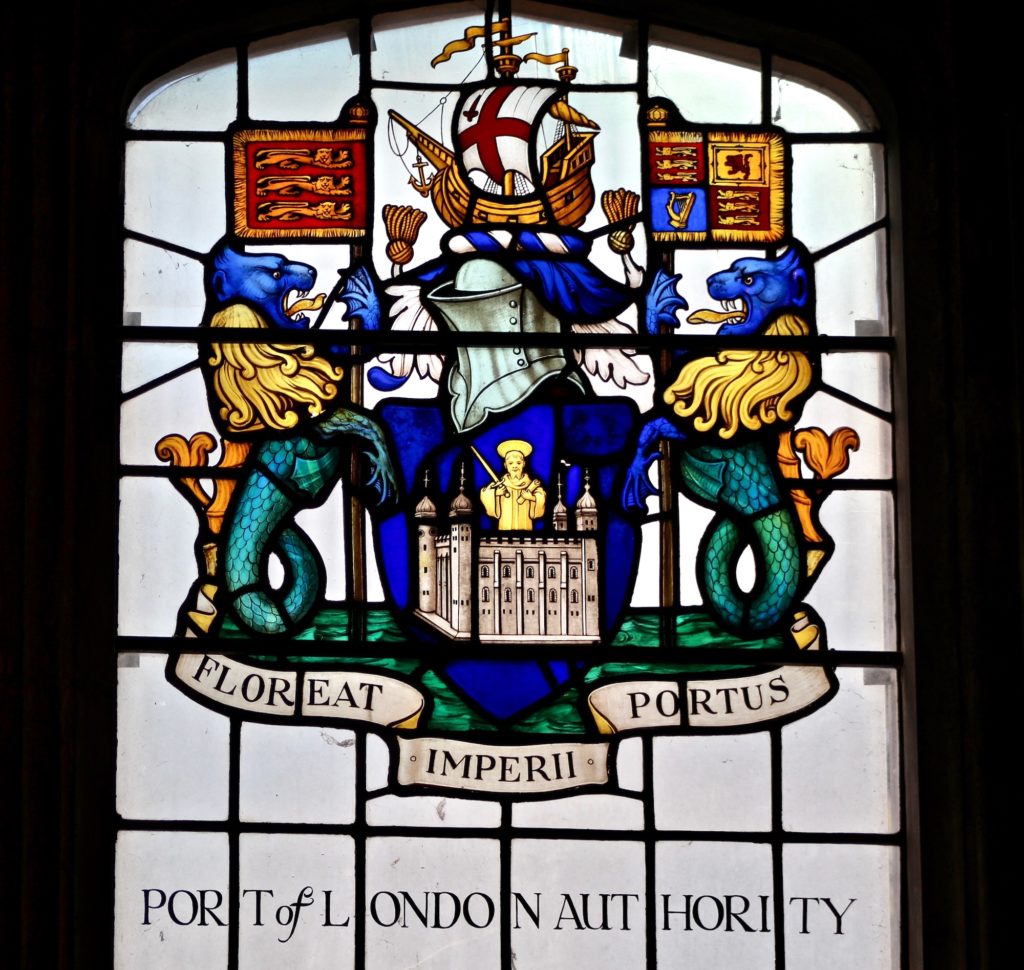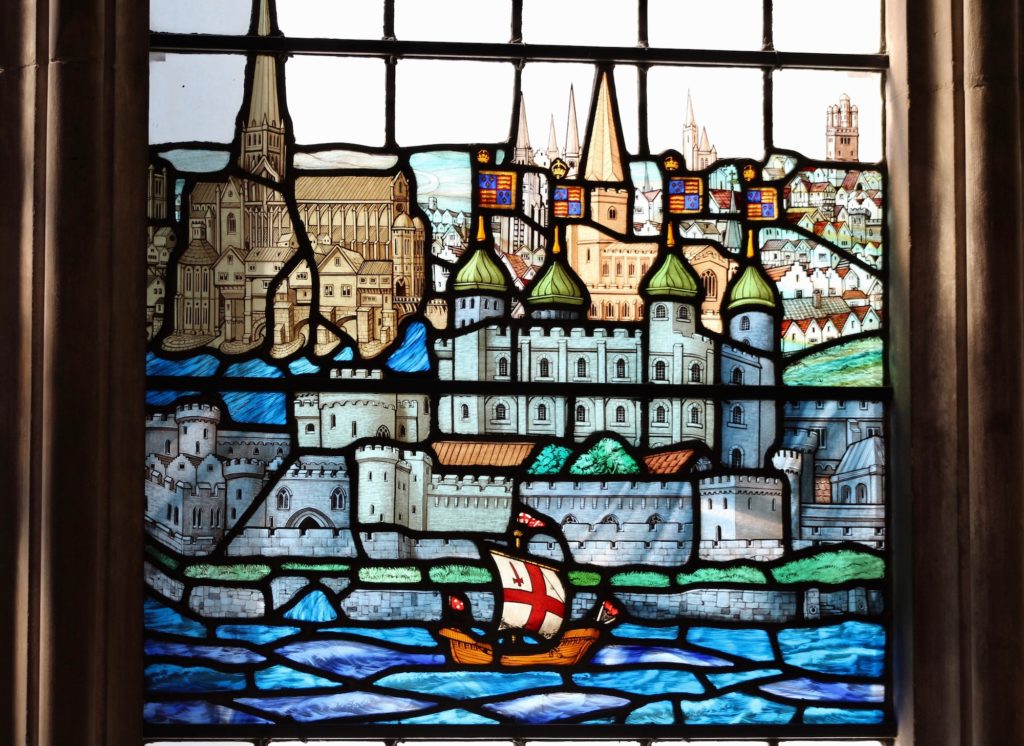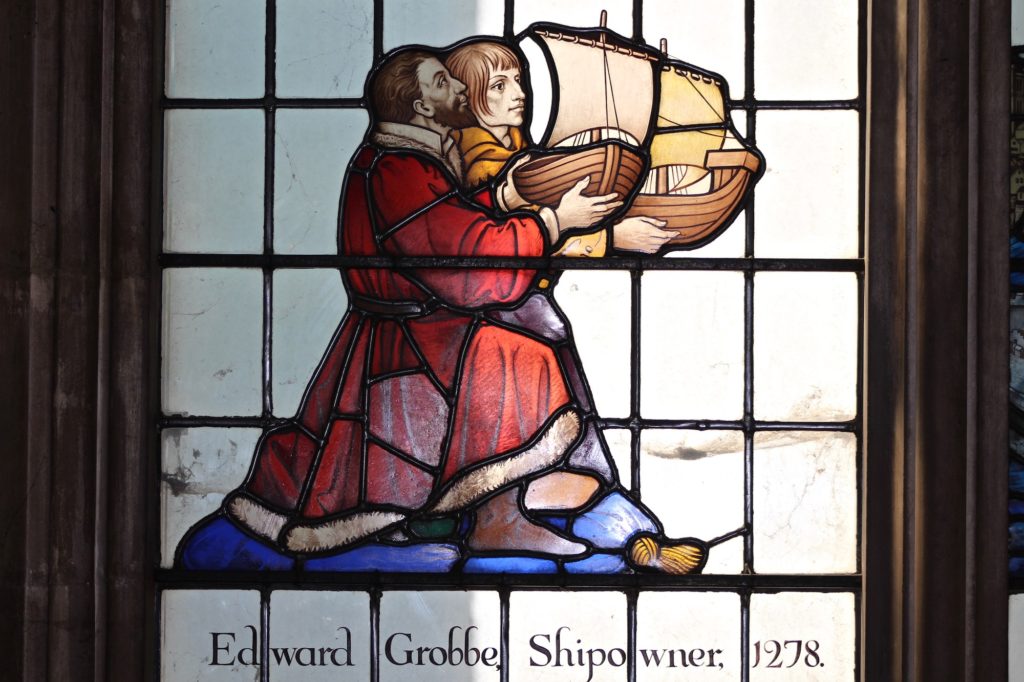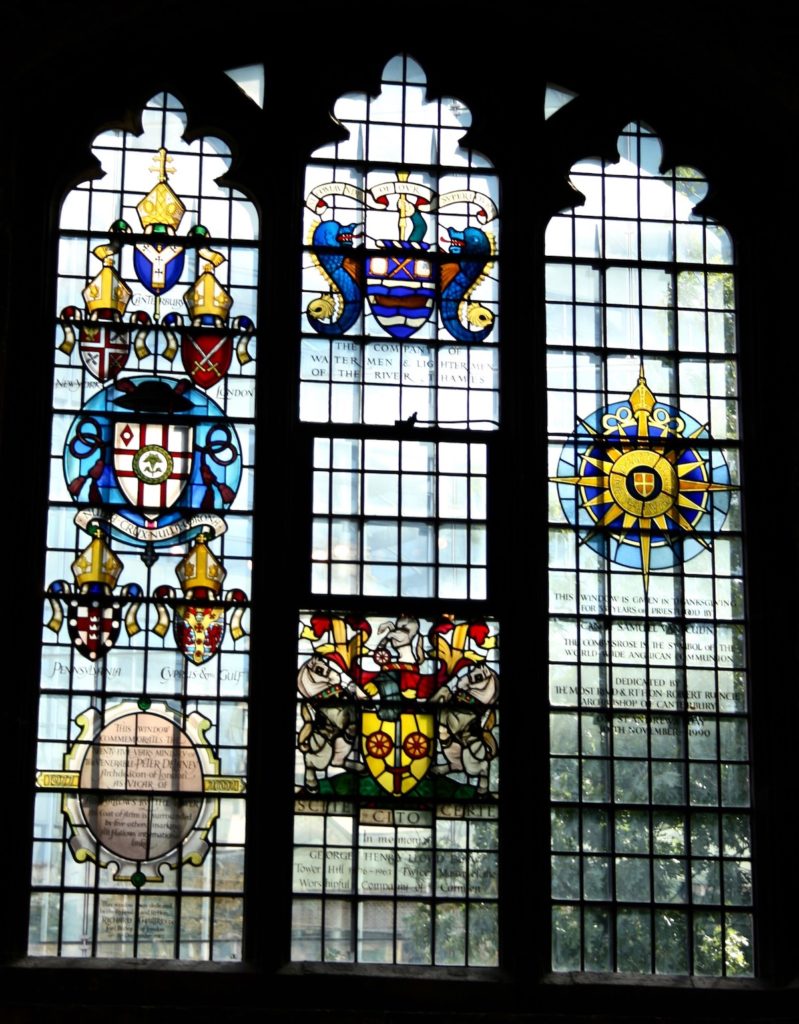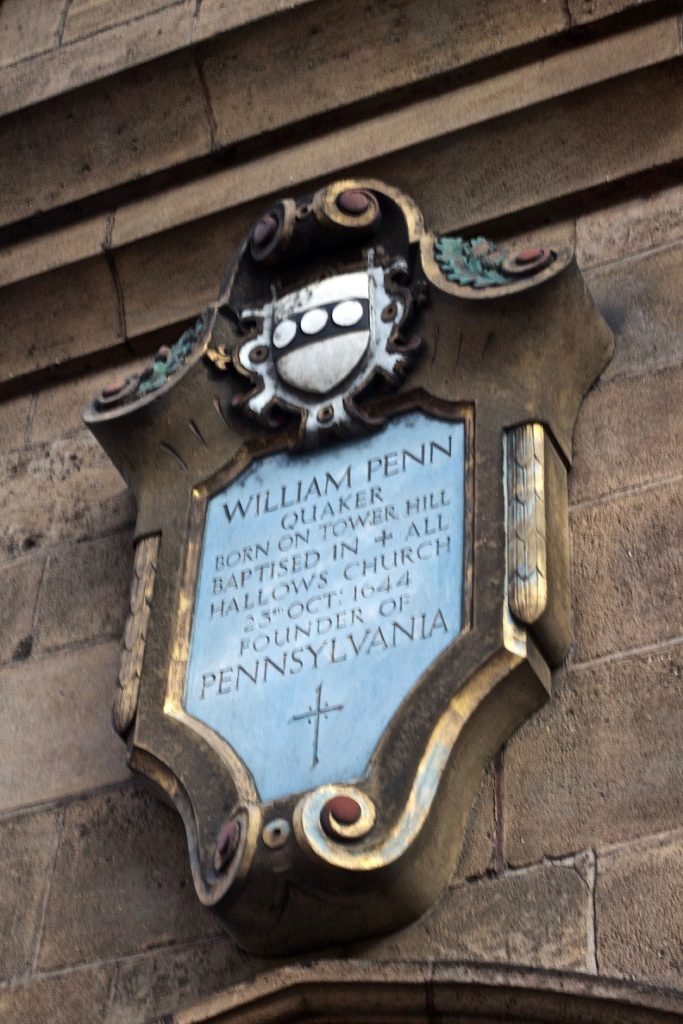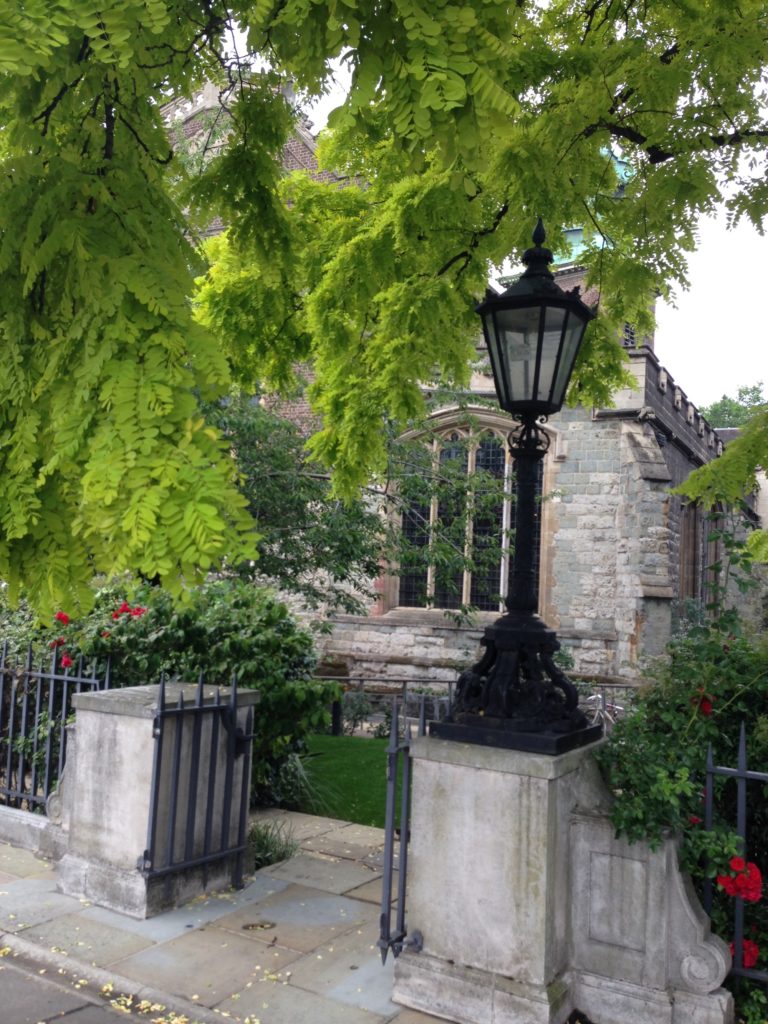A masterpiece of British engineering and design protecting London since 1982
In 1972 Londoners were asked “If London flooded tomorrow, would you know what to do?” Well most of us didn’t. We were aware of the Thames and its tides of course but hadn’t given the possibility of flooding much thought. Not so the government, they were clearly worried and began a series of measures to raise public awareness. There were a number of public service broadcasts, articles in the press, and notices delivered to thousands of residents in low lying areas close to the river. Living near the Royal Hospital, Chelsea at the time, we received an A5 sized notice warning us about possible flooding from the sewers. Not a happy prospect. There were instructions on one side and ‘HELP’ written in big red letters on the other, which we were supposed to stick on, or wave out of an upstairs window. Luckily we never had need of it and ten years later the Thames Barrier had been completed and London protected for years to come.
Always on the alert, and taking into account information from satellites, weather ships, oil rigs and coastal stations, the Environment Agency can forecast potential danger of flooding up to thirty-six hours in advance. When computer calculations based on a combination of high spring tides, expected tidal surges, low atmospheric pressure and strong winds indicate a risk of flooding, the team at the Thames Barrier are ready to set the flood defences in motion. However, the final decision to close the barrier rests with the Thames Barrier Duty Controller.
At the time of writing the most recent closures have been on Sunday September 30 and Monday, October 1st, 2019. The Barrier has now been closed 186 times since it first came into operational service in 1982. Since its first test in November of that year, this masterpiece of British design and engineering has been operational, ready to be put into a defensive position to protect 125 square kilometres of central London from flooding. It stretches 520 metres across the Thames at Woolwich and its shining, hooded piers are a striking feature of the landscape.
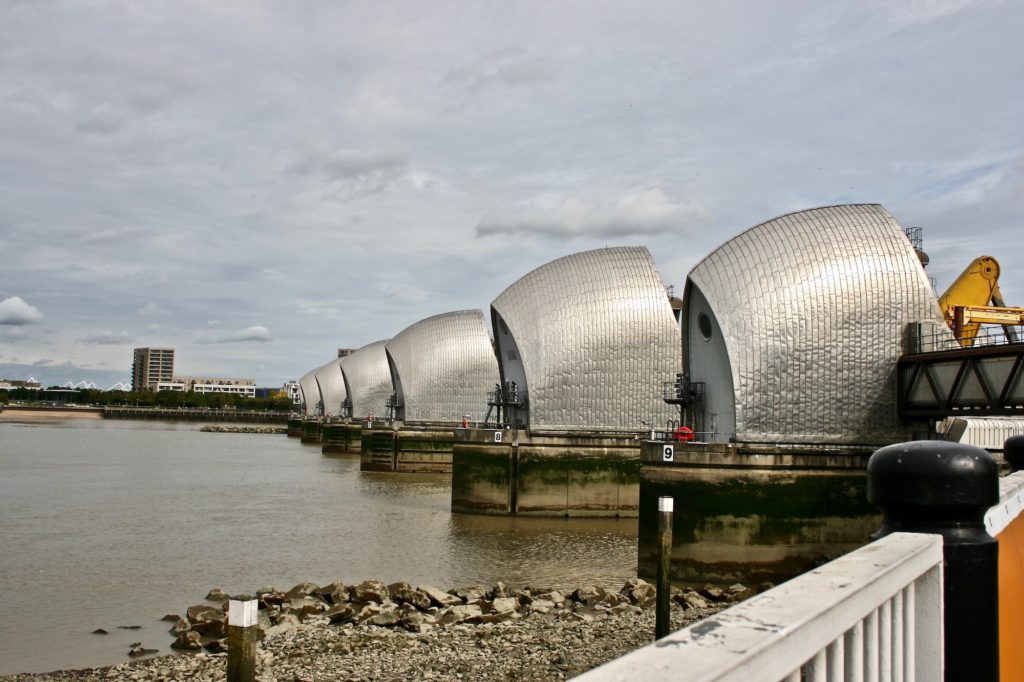
London has been flooded throughout its history both as a result of rising sea levels and the progressive tilting of South East England. The problem was exacerbated by the gradual embankment of the Thames in the second half of the nineteenth century, which channelled the river into an ever smaller space, so raising its level in central London.
The severe 1953 flood that struck coastal areas along the North Sea and particularly Canvey Island where fifty-nine people were drowned and 13,000 evacuated from their homes, and an earlier flood that had struck the heart of London itself in 1928, drowning fourteen people and making thousands homeless, began to concentrate minds on devising proper flood defences for the capital.
In 1954 Hansard reports that the Waverley Committee set up by Parliament, proposed that: “As an alternative to raising the banks”, which would have been likely to obscure stretches of the river from view, “the possibility and cost of erecting a structure across the Thames, which could be closed in a surge should be urgently investigated.”
However, it was not until a further review, conducted by Sir Hermann Bondi in 1967, taking the project forward, that any action took place. The site for the barrier was then fixed at Woolwich, from New Charlton across to Silvertown as part of an overall plan which included the raising of the river banks further downstream. Then a design had to be chosen.
From the forty-one plans considered, it was engineer (Reginald) Charles Draper, working with Rendel, Palmer and Tritton, who came up with the chosen solution. It was a revolutionary idea inspired by a simple gas cock in his home. He was photographed in 1981 by Gordon Gahan, overlooking the as yet incomplete barrier, proudly holding a gas ball valve like the one that had given him the idea: a poignant image as Charles Draper sadly died before the work was finished.
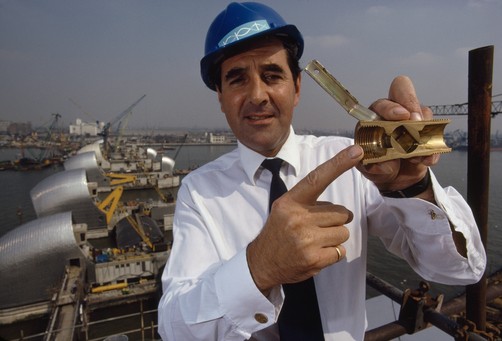
There followed ten years of modelling, testing, refinement of the design, and actual construction; longer than planned as it was the first project of its kind. There were also funding problems and a number of serious industrial disputes. The Thames Barrier finally became fully operational in November 1982 when it rose for the first time, and was officially opened by the Queen in May, 1984.
Towards the end of its construction, intrigued by reports of its innovative design, we took our young sons to see how the work was getting on. Not easy. There were no signposts. But armed with an A to Z map we got quite close and luckily spotted a workman in a hut on a nearby building site. Clearly we were not the first to have been on this trail as he produced a photocopy of a rough map with directions to a viewpoint at the top of some metal stairs. Breathtaking. The barrier really was as impressive as it had been made out to be.
These days you can see the barrier from the Thames Barrier Park, in Silvertown north of the river; the Thames Barrier Information Centre, near Woolwich, on the south side; or from a boat passing though the barrier itself. It was this last view that really brought home to me the massive achievement of all those involved with the building of London’s most important defensive structure.
Approaching the barrier from upstream, its distinctive gleaming metal-hooded piers seem to rise up through the water like dragon’s teeth warriors each with a cyclopesian eye. The closer you come, the more impressive they are.
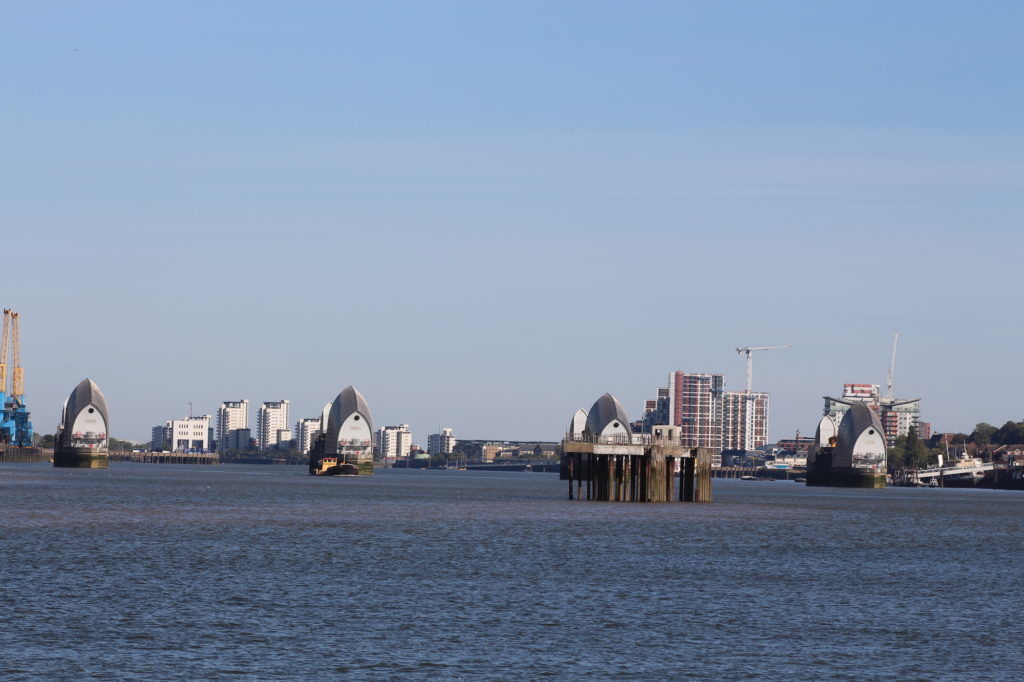
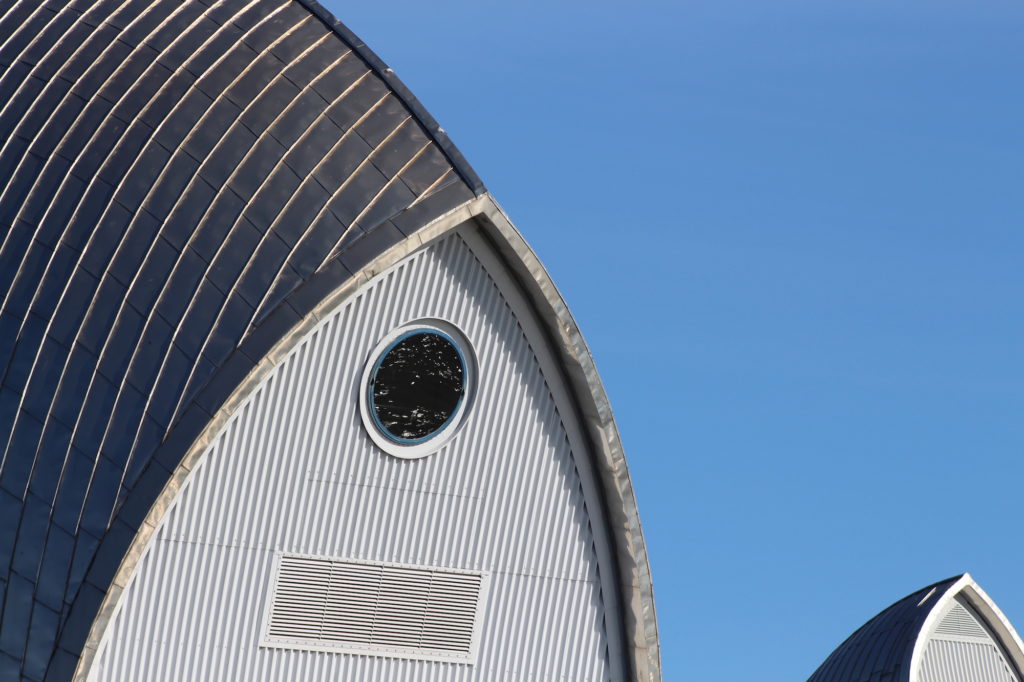
The six main steel gates are D-shaped. When set in the defence position their rounded surfaces face downstream and their flat surfaces upstream. Known as rising sector gates they normally lie flat at rest in concrete sills on the river bed, allowing free movement of shipping and normal tidal flow. Operated by a hydraulics system in the towers they can be held in four positions: rest, defence, underspill and maintenance. When the barrier is used or tested, the gates are moved into place shortly after low tide to hold back the flow of the river on the upstream side and to stem the incoming tide downstream.
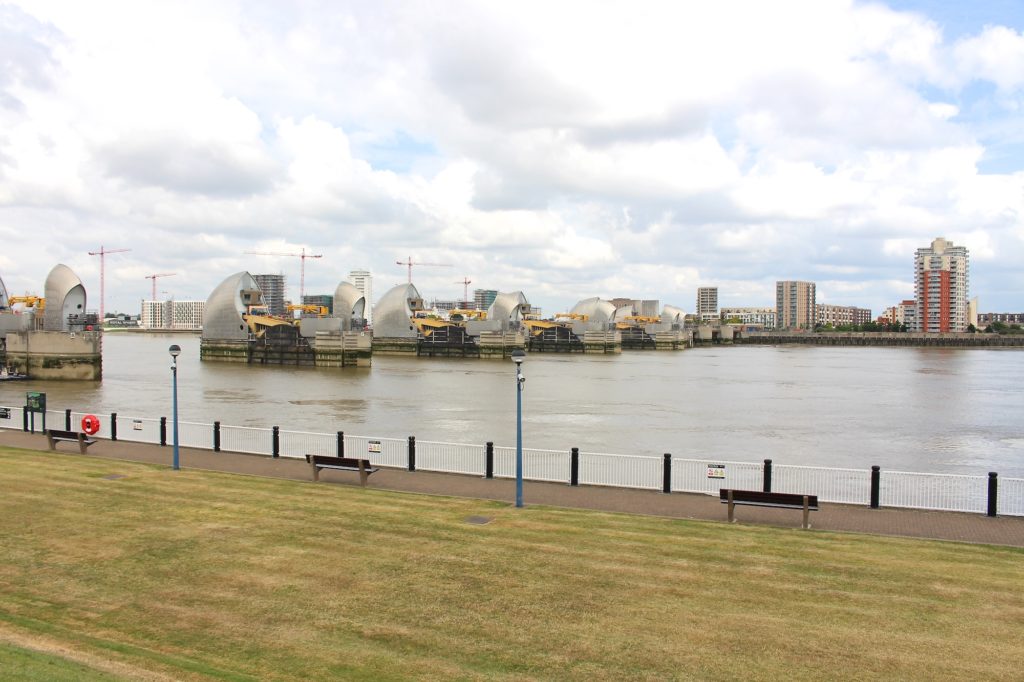
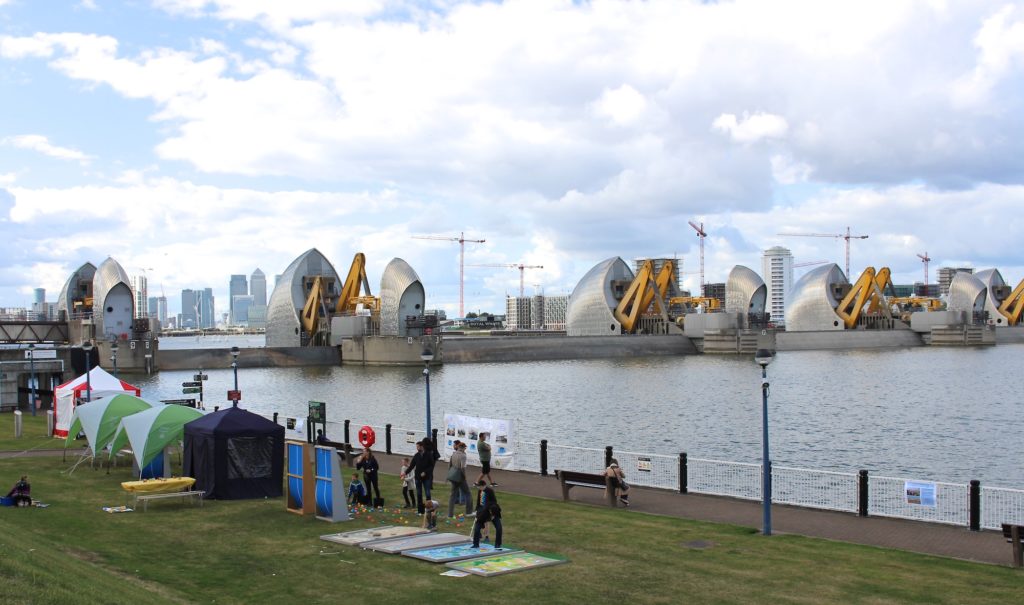
A strong tidal surge will build up considerably more water on the seaward side so that when the tide begins to flow out the gates are gradually moved into the underspill position, allowing a carefully controlled flow upstream so as not to create a rush of water. The gates can only be lowered into their resting position once the levels on each side are the same. They can also be raised and held above the water to allow access for maintenance. In addition, there are four non-navigable gates set close to the river banks.
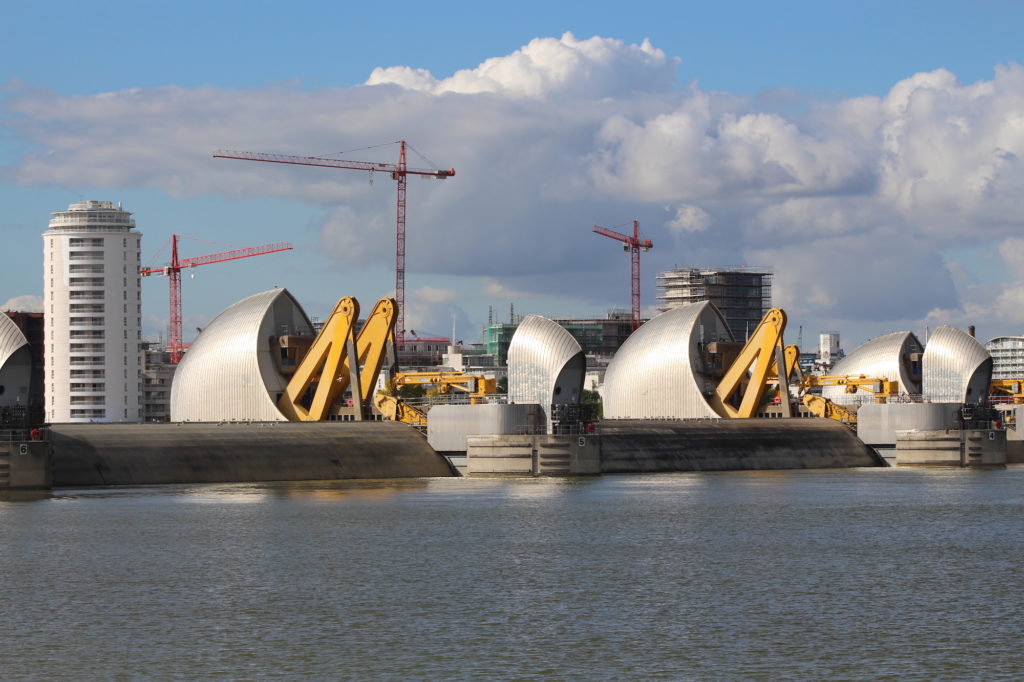
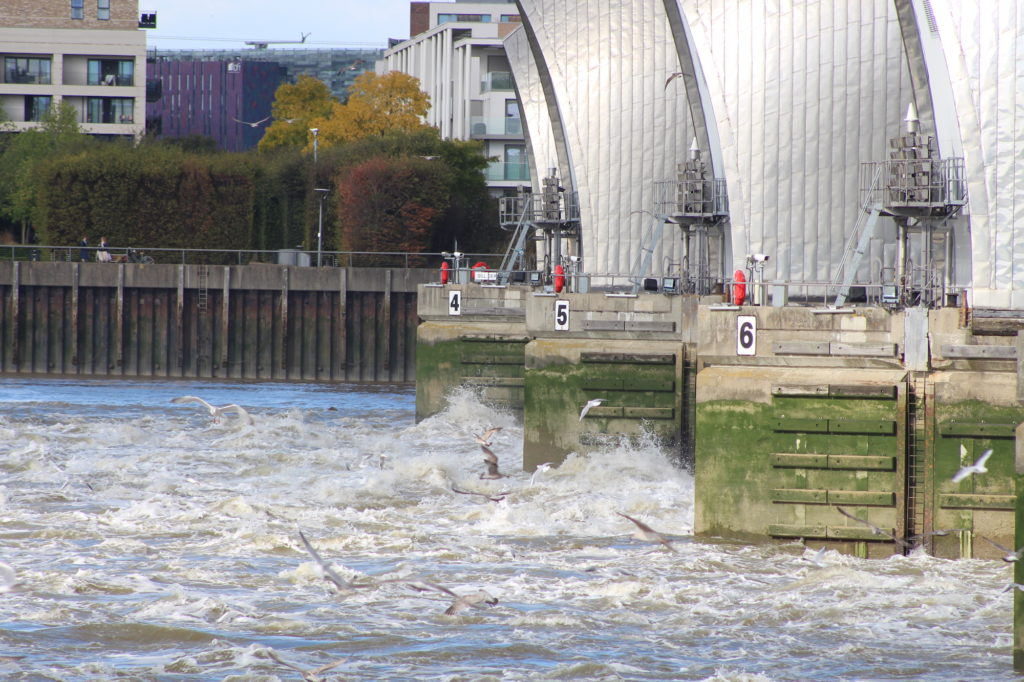
The decision to close the barrier is made by the Duty Controller after assessing reports from a team of flood forecasters. Taking into account the flow into the tidal Thames at Teddington, the predicted tide levels and weather conditions that can affect the height of a tidal surge, forecasters can predict the likely risk up to thirty-six hours in advance. The control room is staffed at all times. If necessary, the barrier will be closed roughly four hours before the peak of an incoming surge. Each steel gate takes ten to fifteen minutes to close, and the whole barrier an hour and a half.
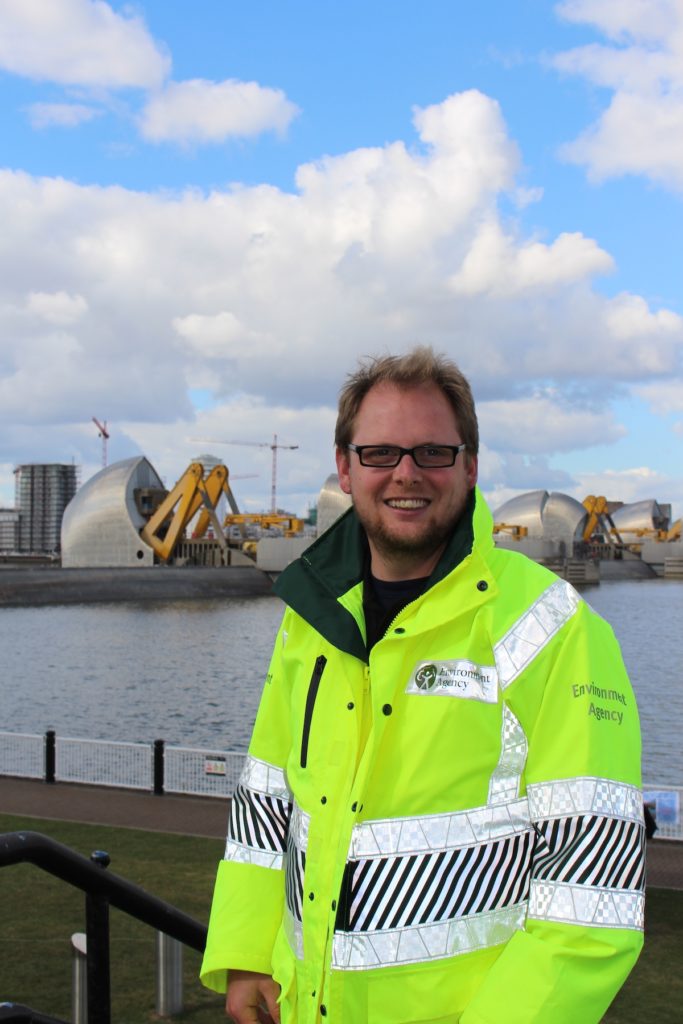
Flood forecaster Alan, who also runs the barrier’s Twitter feed explains that though they run monthly test closures they’ve “never had to close between May and August to protect London against a high tide since the Thames Barrier became operational in 1982. It doesn’t mean that we’re not on the lookout though.”
This year’s annual test closure was due to take place on September 29th but had to be cancelled after particularly high tides meant that the barrier had to be closed twice in three days for real, to protect London from flooding.
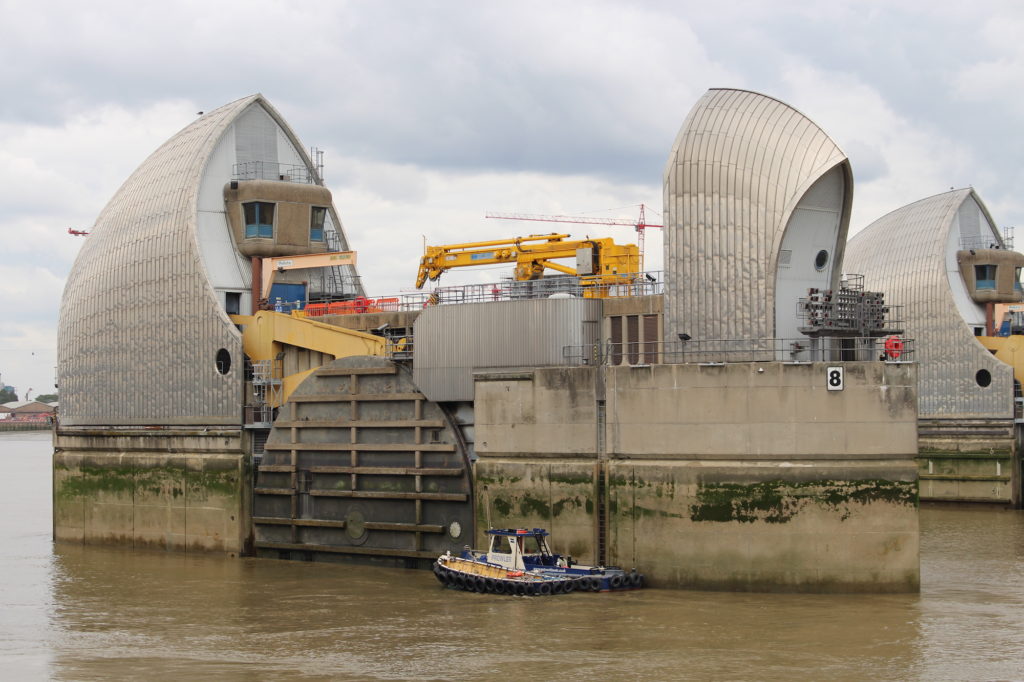
As mentioned earlier, the barrier has been closed to protect London 186 times but the exceptionally high number of fifty closures in the 2013-14 flood season caused real concern. Doubts were raised that the barrier would be able to protect the capital beyond its originally estimated lifespan of fifty to sixty years. However after a study, Dick Tappin, a member of the original team who created the barrier, wrote in 2014 that “The Thames Barrier remains fit for purpose” and provided it is properly maintained, “it will remain so to at least 2070.” This was backed up by a government study revised in 2016 saying that the Thames Estuary defences, “which include the Thames Barrier and 350 kilometres of flood walls and embankments, smaller barriers, pumping stations and flood gates” will continue to protect London throughout the century. We are fortunate that the marvel of modern engineering that is the Thames Barrier will be with us for a while yet.
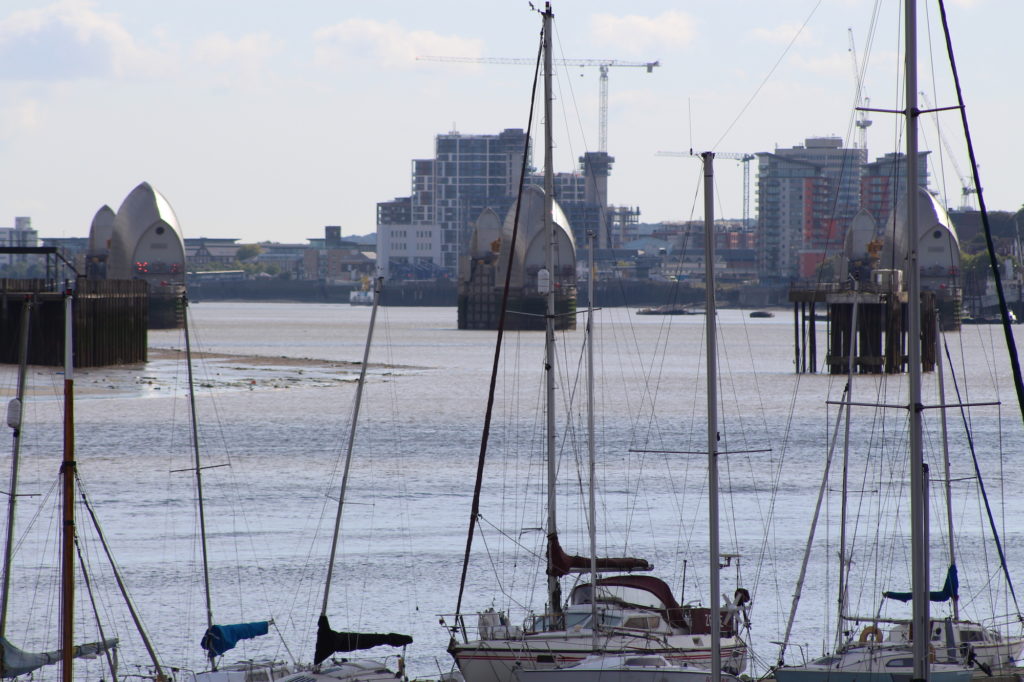
For the main source of my article, with understandable, technical information and explanatory diagrams, click on the: Thames Barrier and follow @AlanBarrierEA for up-to-date info. An internet search will reveal many striking images of all kinds of ships passing through the barrier including some by Photographer Rob Powell on http://onthethames.net
